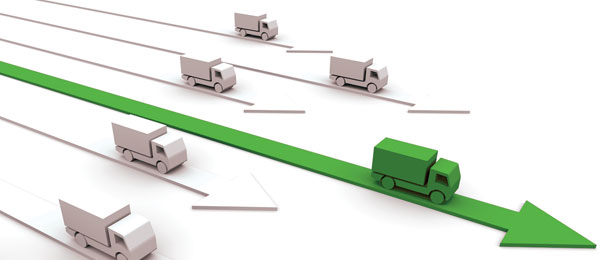How to Select Expedited Services

5 Steps to Expediency, Efficiency, Economy
Expedited delivery is a necessity for all companies, whether they are meeting unexpected seasonal demand or managing shipments by exception. They use expedited service to move parcel and temperature-sensitive packages, specially packaged product, oversized equipment— and everything in between. Cost is secondary to timeliness and service, but shippers have to consider multiple factors when they work with service providers to move expedited freight.
Cargo often simply needs to move fast in response to a plant shutdown, or to meet the requirements of a critical part, high-value, or emergency shipment. Whatever the reason, shippers and service providers need to immediately consider potential options and settle on a viable solution.
The urgency or geographic scope of a move dictates whether a shipment travels by air or ground. But customers are generally less concerned with how a critical shipment is delivered, as long as it arrives intact and on time.
Alternatively, there are complicated scenarios where shipments need to be recovered and rerouted via multiple modes. For example, if a company transports a product by truck and an order deviation occurs, that cargo needs to be located, quickly brought out of the system, then re-expedited. This requires a great deal of communication among the shipper, consignee, and transportation partners to identify urgency and work together to explore and execute appropriate resolutions.
Sometimes an additional level of white-glove service is necessary to ensure a shipment is delivered beyond the loading dock. Inbound and outbound, a time-sensitive order might have to be picked up from or delivered to an agent or inside a facility to meet customer safety and security needs.
In these situations, supply chain partners have to maintain visibility throughout the entire transportation process. This may entail real-time information and communication between a shipper and consignee in a point-to-point move; or it may require end-to-end visibility from the original demand signal back to the supplier. The faster supply chain partners understand expedited requirements, the quicker they can respond with efficient and economic solutions.
5 Steps to Expediency, Efficiency, Economy
1. Define “real” time requirements. Sometimes shippers allow for “just in case” time when coordinating transportation to customers. But not all expedited deliveries are critical, so understanding the consignee’s actual demand requirements is important. If it’s really a priority, communicate that urgency. Alternatively, shippers should coordinate with customers to determine potential allowances —whether a shipment can move quickly (second-day ground), but not super fast (same-day air). Waiting a few hours for delivery can often save everyone a considerable amount of money.
2. Communicate details. Shippers need to give extra attention and care to communicating cargo vitals for timely deliveries. This includes specifying shipment weight, dimensions, and absolute time requirements.
3. Consider transportation and logistics options. Carriers and expediters are often limited by pick-up and drop-off deadlines. Third-party logistics providers and forwarders are less constrained by time of day and mode, and can create new avenues for moving freight. Working within their own network of transport partners, they can help reduce expedited costs, while meeting last-minute time specifications.
4. Plan ahead. Managing exceptions should be an expectation. Shippers need to have contingencies in place before they happen. There is nothing more costly than having to make an expedited transportation decision on the fly without easily available supporting information. Moreover, when shippers find service providers that capably manage expedited needs, they should consider opportunities to grow that relationship. If a transportation partner can succeed under pressure, perhaps it deserves a bigger role within the enterprise.
5. Don’t cheat on cost. Expedited service comes at an expense. Failure to provide timely delivery can create additional costs in terms of production stoppage, missed customer commitments, and lost business.
